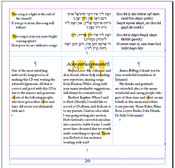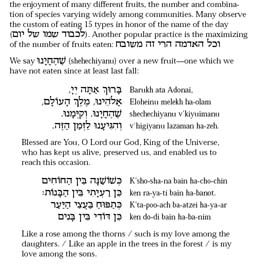I have just finished reading the marvellous book by Adina Hoffman and Peter Cole on the Cairo Genizah, Sacred Trash. I am also busy at work (again, but perhaps this time with actual visible results to come soon) on a new website on Hebrew Typography. While such a site should contain an active blog (as this one does not, but could), it should also contains information that, like the many shards found in the Genizah, is not available elsewhere and needs to be assembled into a coherent whole. If I could tell that story as well as Hoffman and Cole have illuminated both the process of exploring the hundreds of thousands of Genizah artifacts, and what we have learned from them, it would be a big deal.
Unfortunately, while I have been quite facile with web technology this past decade or so, I find my memories of Hebrew type in need of refeshment. So, what should such a site cover?
- Hebrew lettering—obviously, some discussion of Hebrew letterforms, including the early "chicken scratches" used until (if we assume that Birnbaum is still authoritative on this subject) the first exile. A few words at least on mystic traditions attached to the forms? Obviously, some space on the various calligraphic styles that have developed over the past two or three thousand years
- Hebrew printing—we start in Italy with the earliest printers, then on to Soncino (credit Griffo?) and Bomberg and how Bomberg's Talmud really changed how we study Talmud--is this the first time we got the hypertext layout? Then on to early European types, the "Yiddish types" (Ittai Tamari has done great research on this subject, but only in German--has he published in English? Then there is Herbert Zafren's work), the great Hebrew types of the Middle Ages--Le B^eacute;, Kis, Van Dyke (not convinced); certainly spend time on the early 20th century with Frank-Ruehl, Chaim, etc.; then the great Israeli explosion of the 1950s (more of less--start w/Koren which is earlier, but then types of David, Narkis, Friedlander, Yarkoni); modern Israeli type--there is some wonderful work happening, both traditional and avant garde--note Oded Ezer)
- Multilingual typography—The difference between what we are used to seeing (dueling languages and straight, opposite margins), and what thoughtful typographers do to ensure usability, grace, and readability (how/when to position Hebrew, transliteration, translation in reference to each other and examples that make the case that paying attention makes a difference. This, of course, is my own favorite subject. Should also be some notes on appropriate sizing of say Latin U/lc and Hebrew w/ or w/o vowels.
- Technology?—It may be worth inserting something somewhere about the difficulty of setting Hebrew with nikud, trup, etc., from the setting of separate lines in the metal, to the various compromises used in modern systems, if only to help explain why there are some things that require special software (or lots of time and effort in cold metal), so that people know what the problems are and when to look where for solutions.
Does this make sense? What am I missing (or including, pointlessly)? What are sources to which such a series of writings must refer? (by which I mean not just the Birnbaum volumes or Friedlander's booklet on designing Hadassah, but, say, the Porro polyglot)
Until I fix this blog (coming, I hope), just email me comments.



